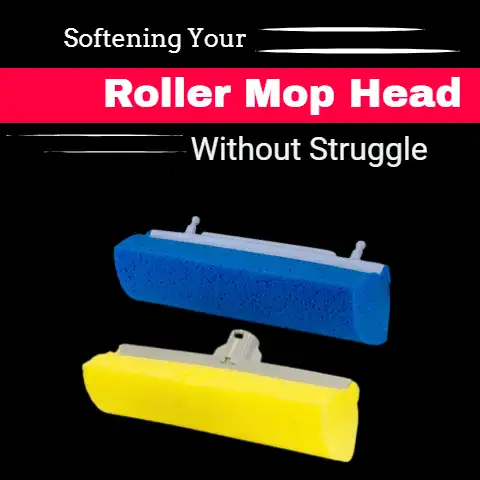How To Make A Floor Mop At Home (Diy Mop)
Most people think that making a floor mop at home is difficult. But that’s not true at all! I’ve made my own mops, and it’s easier than you’d expect. Imagine not having to rush to the store every time your mop breaks. Instead, you just make one yourself. Let me guide you through this fun and simple process.
Why Make Your Own Mop?
Ever wondered why you should bother making a mop? Here’s why: cost savings, customization, and creativity. When you make your own, you choose the materials, the size, and even add personal touches. Plus, isn’t it fun to say, “I made this myself!”?
My First DIY Mop Experience
I remember when I first tried making a mop. I was tired of buying new ones that kept falling apart. So, I decided to make one from old T-shirts. It was surprisingly effective! Now, I never look back.
Materials You’ll Need
Before starting, gather these materials:
- Wooden stick or broom handle
- Old T-shirts or towels
- Scissors
- Strong string or zip ties
- Drill (optional)
Preparation
- Choose the Right Stick: Look for a sturdy stick around 4-5 feet long.
- Gather Fabric: Use old T-shirts or towels. Ensure they’re clean and absorbent.
- Safety Gear: Get gloves and safety glasses if you’re using tools like a drill.
Making a Basic DIY Mop
Step-by-Step Instructions
Step 1: Cut the Fabric
- Lay out the Fabric: Spread your T-shirt or towel flat.
- Cut into Strips: Use scissors to cut 1-inch wide strips. Longer strips work better for mopping.
Step 2: Attach Fabric to Stick
- Bundle the Strips: Gather strips together.
- Secure with String: Tie them firmly around one end of the stick. Double knot for security.
Tip: Use a zip tie for extra strength.
Step 3: Secure with a Drill (Optional)
- Drill a Hole Through the Stick: Near the top where the fabric is tied.
- Thread More String: Through the hole and tie around the fabric for added hold.
Warnings
- Be cautious when using sharp tools.
- Ensure knots are tight to avoid unraveling.
Different Methods and Variations
Using a Mop Head Refill
If you have an old mop head refill lying around, you can use it!
Materials Needed:
- Old mop head refill
- Broom handle
- Screwdriver
Steps:
- Remove Old Handle: Unscrew and remove any old handle.
- Attach New Handle: Screw your broom handle into the mop head.
Tip: Check it’s secure by giving it a little shake.
Making a Sponge Mop
For those who prefer sponge mops:
Materials Needed:
- Sponge
- Drill
- Screws
Steps:
- Cut Sponge to Size: Trim if necessary.
- Attach with Screws: Drill screws through sponge into stick.
Tip: Choose stainless steel screws to avoid rusting.
Common Mistakes to Avoid
- Loose Knots: Ensure all knots are tight.
- Weak Sticks: Avoid using flimsy sticks that might break.
- Poor Fabric Choice: Choose absorbent fabrics for best results.
Cleanup and Finishing
After making your mop:
- Test it Out: Mop a small area to ensure it’s working well.
- Store Properly: Hang it up to dry after each use.
- Regular Maintenance: Replace fabric strips when worn out.
Safety Considerations
- Always wear gloves when cutting fabric.
- Be mindful of sharp tools and power equipment.
- Keep children away during the process.
Creative Mop Designs
Braided Mop Heads
For a more durable mop head, consider braiding your fabric strips.
Steps:
- Cut More Strips: You’ll need about 9 strips for braiding.
- Divide into Groups: Divide strips into three groups of three.
- Braid Each Group: Braid tightly for strength.
- Secure Braids to Stick: Tie each braid securely to the stick.
Reusable Microfiber Mop
Microfiber cloths are great for cleaning due to their absorbent and dirt-trapping qualities.
Steps:
- Gather Microfiber Cloths: Use old microfiber cleaning cloths.
- Attach with Velcro Strips: Use adhesive Velcro on both stick and cloth for easy removal and washing.
Tip: This method is perfect for those who like washable mop heads!
Customizing Your Mop
Adding Fragrance
Want your floors to smell fresh? Here’s how:
- Essential Oils: Apply a few drops of essential oil to the fabric strips before mopping.
- Fabric Softener Sheets: Wrap a sheet around the mop head for a fresh scent as you clean.
Adjustable Length Handle
For those hard-to-reach places:
- Use a Telescopic Handle: If available, attach your mop head to an adjustable handle.
Personal Stories and Insights
The Time I Made a Mop as a Gift
Once, I crafted a mop as a gift for a friend moving into their first apartment. They loved the personal touch and practicality of it! It’s not just about cleaning; it’s about sharing something handmade and useful.
Learning from Mistakes
I’ve had my fair share of mishaps, like choosing fabrics that left lint everywhere or using handles that were too short, making my back ache after cleaning. These experiences taught me valuable lessons in crafting functional mops.
Advanced Techniques
Sewing Mop Heads
If you’re handy with a needle and thread, sewing can add durability.
Steps:
- Sew Fabric Strips Together: Create a loop that fits snugly around the stick.
- Reinforce with Extra Stitching: Especially around areas where stress is applied during mopping.
Creating a Scrubbing Mop
For tougher stains, add scrubbing power!
Materials:
- Scouring pads
- Adhesive glue or Velcro
Steps:
- Cut Scouring Pads to Size: Attach them to the bottom of your mop head.
- Secure with Glue or Velcro
Warning: Test on a small area first to ensure no damage to floors.
Environmental Considerations
Making your own mop contributes to sustainability by reducing waste and reusing materials otherwise discarded.
How Do I Make My Mop Last Longer?
Regularly clean and dry your mop head after use to prevent mildew and odor buildup.
Can I Use Different Fabrics Together?
Absolutely! Combining cotton with microfiber enhances absorbency and cleaning power.
Making your own floor mop can be rewarding and practical. Not only do you save money, but you also get exactly what you want. Whether you’re using old shirts or sponge heads, the possibilities are endless. So why not give it a shot?






